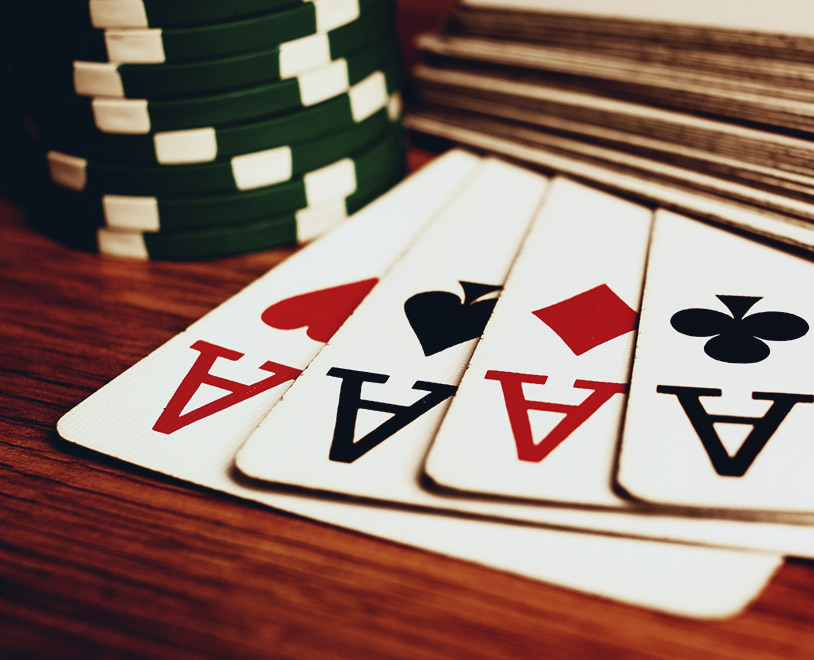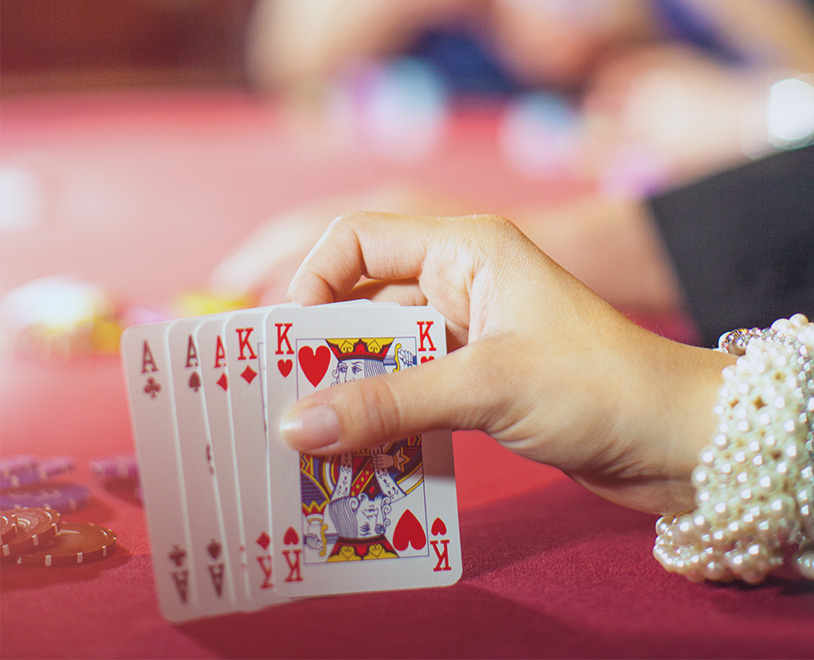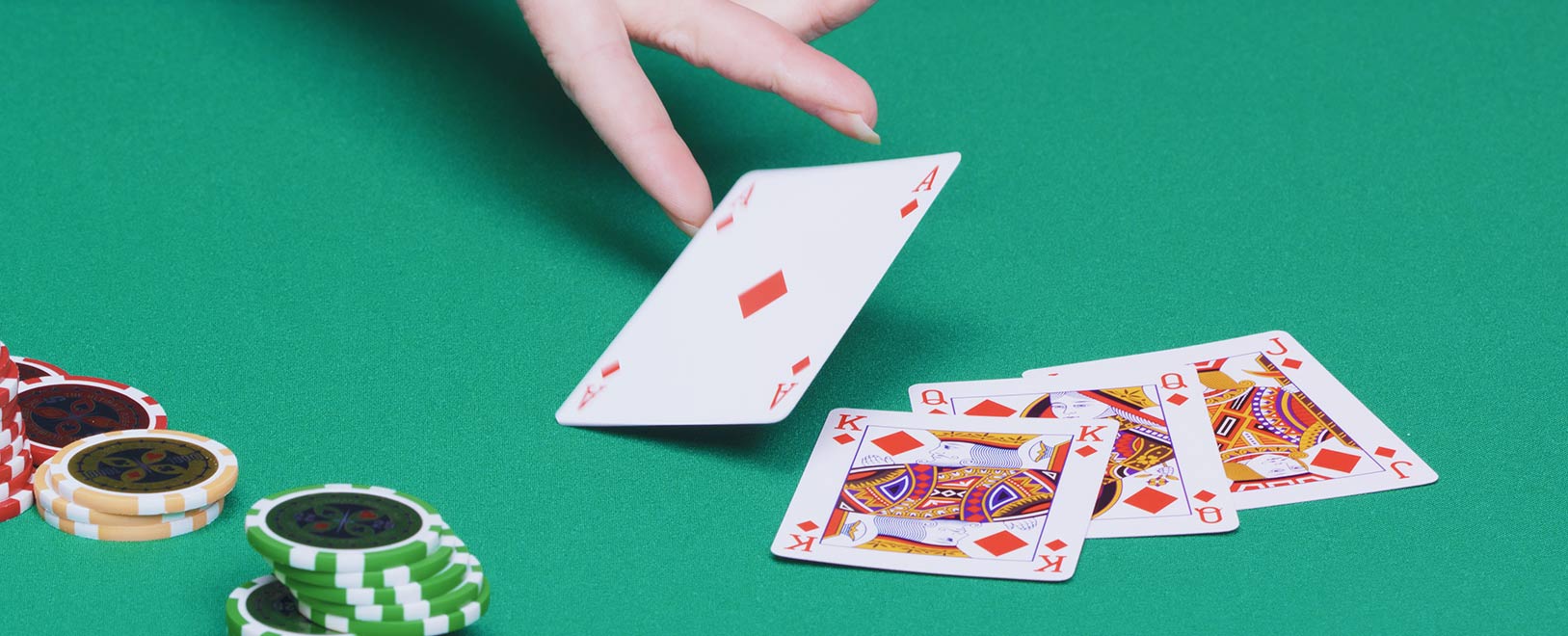Texas Hold’em is far and away the most popular way to play poker. But if you wander into Bobby’s Room at the Bellagio, or perhaps the Ivey Room at Aria Resort and Casino, you’ll find the highest of the high rollers playing mixed games – and having the time of their lives. Every 10 hands or so, one of the players will choose a new game to play, and one of the most popular games in the rotation is Omaha Hi/Lo. Can’t afford to play in the Big Game? No problem; you can play Omaha Hi/Lo poker anytime you like at Bovada. We’ll show you the ropes, everything from the basic Omaha Hi/Lo rules to some very useful tips for how to play Omaha Hi/Lo like a champion. Even if you’ve never played the other “flop” games at Bovada Poker, you can learn Omaha Hi/Lo starting from scratch, but the game will be easier to figure out if you’re making the transition from the Hold’em and Omaha tables.

Omaha Hi/Lo vs. Omaha vs. Texas Hold’em
Making the switch from Hold’em to Omaha is a breeze. They’re practically the same game, but you get four hole cards instead of two. Omaha Hi/Lo poker kicks it up a notch by asking you to make the lowest 5-card poker hand possible, as well as the highest hand. This is a split-pot game, with half the pot going to the best high hand, and the other half going to the “best” low hand – if there is one, which we’ll get to in a moment. Note that you must use exactly two of your hole cards to complete your 5-card hand in Omaha and Omaha Hi/Lo. Don’t get tripped up by this rule if you’re making the transition from Hold’em.

Omaha Hi/Lo Poker Rules
In case you’re brand-new to poker, let’s start at the beginning with the cards themselves. A deck consists of 52 cards, with four different suits: clubs, diamonds, hearts, and spades. There are 13 cards in each suit that are ranked from highest to lowest, with the Ace acting as a high or low card – making it particularly valuable in Omaha Hi/Lo. The next-highest cards are the King, Queen and Jack, followed by Tens through Twos (aka Deuces). The general object of poker is to make the best 5-card hand possible, based on the standard poker hand rankings:
Royal Flush (Ac-Kc-Qc-Jc-Tc)
Straight Flush (8d-7d-6d-5d-4d)
Four of a Kind (As-Ah-Ad-Ac-6s)
Full House (Ks-Kh-Kc-Qd-Qh)
Flush (As-Ks-Js-5s-3s)
Straight (5h-4h-3d-2s-Ac)
Three of a Kind (7s-7c-7d-Ah-2c)
Two Pair (5s-5c-4c-4h-Jc)
One Pair (9s-9c-Ah-8d-2c)
High Card (Ah-Qs-7h-5s-3s)
With Omaha Hi/Lo, you’re also trying to make the worst 5-card hand possible. Don’t just imagine these rankings turned upside-down, though. Straights and Flushes don’t count when you’re trying to make a low hand. Also, Omaha Hi/Lo rules include the “Eight or Better” qualifier, meaning each of the five cards in your Low hand has to be Eight or lower in value. The nut Low in Omaha Hi/Lo is the wheel, Five-Four-Three-Deuce-Ace; the least powerful Low hand possible is Eight-Seven-Six-Five-Four.
To play Omaha Hi/Lo, you need more than just cards – you also need betting chips. While you’re trying to make your High and Low hands, you’re also placing bets, using chips instead of money. Those chips are gathered in a pile in the middle of the table; this pile is called the pot, and the pot is split between the winning High hand and the winning Low hand, provided there is one. If nobody makes a Low, the entire pot goes to the best High hand.
There are up to four rounds of betting in Omaha Hi/Lo. The first round is called pre-flop, and it starts with two of the players making forced bets: the small blind, and the big blind, which is twice as large. These bets help keep the action going, and to keep things fair, everyone at the table will eventually get a turn in the blinds. After the blinds are placed, the Dealer will give everyone four hole cards, face-down, starting with the player in the small blind, then the big blind and continuing clockwise around the table.
Once everyone has been dealt four cards, the action begins with the player to the left of the big blind (this player is said to be under the gun, or UTG for short). The UTG player can either raise the big blind by putting at least twice that many chips in the pot, call by matching the big blind, or fold their cards and wait for the next hand. Then the next player to the left has the same three choices, and so on around the table, with the big blind acting last.
Sometimes, everyone at the table will fold before the action gets to the big blind; if this happens, that player wins the hand in a walk and keeps the blinds. Other times, UTG will raise, and everyone else will fold, including the big blind – then UTG wins the pot. But what if someone re-raises? Then the action continues around to UTG, who still has the same three choices: raise, call or fold. It’s the same process if someone else at the table raises and gets re-raised. The pre-flop round will continue until the raising stops and everyone left in the pot has called instead, or until the last raiser is the only player remaining, and therefore the winner.
Assuming the hand isn’t already over, we move to the flop. The Dealer will put three community cards face-up on the table; everyone at the table gets to use these same cards to complete their 5-card hands. You can use any two of your hole cards to make your high hand, and any two to make your low hand – they don’t have to be the same cards. Then the betting starts again, with the small blind (or the next active player to their left) going first this time.
If the flop isn’t enough to decide the winner, the Dealer will put a fourth community card (the turn) on the board, and another round of betting will take place. Still no winner? Then a fifth and final card (the river) goes on the board, followed by one last round of betting. At this point, if there are still at least two players in the pot, it’s time for the showdown: The players turn their cards over, and the winner is declared. Sometimes, the showdown will happen earlier in the hand, after all the remaining players but one have gone all-in and don’t have any more chips to bet with. When this happens, the Dealer will put the remaining community cards on the table and the winner will be decided.

Omaha Hi/Lo Betting Stakes
There are three different betting structures used in Omaha Hi/Lo: Fixed-Limit, Pot-Limit, and No-Limit. Here are the differences among the three limits:
Fixed-Limit: Only two bet sizes are used: the small bet (used pre-flop and on the flop), and the big bet (used on the turn and river). The small bet is equal to the size of the big blind. The big bet is twice the size of the small bet. If you’re playing a $1/$2 Fixed-Limit game, that’s $1 for the small bet and $2 for the big bet.
Pot-Limit: You can bet up to the size of whatever’s already in the pot. In a $1/$2 Pot-Limit game, the small blind is $1 and the big blind is $2.
No-Limit: Same at Pot-Limit, but now you can bet as many chips as you have in your stack.
Fixed-Limit is the most common way to play Omaha Hi/Lo, although Pot-Limit is also used often in cash games. No-Limit Omaha Hi/Lo is usually only found in poker tournaments at Bovada, and shows up most often at larger festivals like the annual Black Diamond Poker Open and Golden Spade Poker Open.
Game stages in Omaha Hi-Lo Poker
Pre-Flop
The button is a graphic symbol that identifies who the dealer is. It moves clockwise after each hand to the next active player.
The blinds are mandatory bets posted at the start of each hand, before any cards are dealt, determined by the small and big bets for that game. Any player that wants to stay in the hand must match the big blind.
The player to the left of the dealer is the first player to get cards, the first to act and the one that posts the small blind. The big blind is posted by the second player, to the left of the small blind.
Example: $10/$20 Fixed Omaha Hi-Lo poker game
Small blind bet: $5 (half of $10). Big blind bet:$10.
Any player has the option of sitting out and waiting for the big blind to reach them. If a player sits out and misses posting the big blind, they'll have to post a big blind to get back in. This stops players from leaving the table before having to post the blinds.
Post-Flop
The dealer then turns over 3 community cards, called the flop. The player to the left of the dealer begins the betting. The action goes around the table as players choose to check, call, raise or fold, returning to the players who posted the blinds.
Then the fourth community card dealt is called fourth street or the turn, which starts another round of betting. In Fixed Limit games the bet increases to the upper stake. Betting continues until all bets are called.
The river is the final community card dealt face up, and begins the last round of betting. The bet amount for Fixed Limit games is the big stake.
Showdown
The showdown happens when all bets have been called. The last player to bet or raise shows their hand first. If all players checked through and nobody bet on the river, the player to the left of the dealer show first with action continuing clockwise, unless a hand is weaker than the winning hand shown. In this case, you can show, or fold without showing, called a muck. If you make a bet and all the other players fold, you ‘buy the pot' and have the option to show or muck your cards. That's where the bluffing comes in.
The highest and lowest 5-card hands split the pot. A player must use 2 pocket cards and 3 community cards to win either the high or the low, or both. If the pot doesn't split evenly, it's called an uneven split pot and the player with the high hand takes the extra chips.
Omaha Hi/Lo Starting Hands
As with the other flop games at Bovada Poker, you’ll have a better chance of winning when you get dealt a good starting hand. The best possible starting hand in Omaha Hi/Lo contains a pair of Aces, just like Hold’em or Omaha; it also contains a Deuce and a Three, and those two cards are suited to each Ace, giving you two nut Flush draws along with the draw to the nut Low. Having the Three is very important here – it keeps your Low draw from getting counterfeited if another Ace or Deuce hits the board.
Omaha Hi/Lo Tips and Strategies
Hold’em has only two hole cards, so it’s easier to put starting hands into different groups like pairs, suited Aces and suited connectors, and build starting ranges based on how powerful your hole cards are. Omaha Hi/Lo makes that somewhat more difficult. Ideally, you’ll want to have an Ace and a Deuce or Three in your starting hand, plus a second low card and another card that will help you win the high hand. Hands that only make the High or Low can be useful, but should be played multi-way, keeping the pot small until you hit your draw.
If you complete your draw with a Low-only hand, don’t be too quick to bloat the pot when you’re heads-up. One of the most important post-flop concepts in Omaha Hi/Lo is getting quartered. This is when you only get one-quarter of the pot, which will happen most often when your opponent has the High hand, and you each tie for the Low hand – usually because you both have Ace-Deuce in your hole cards. It’s much better to three-quarter your opponent instead, so save the big bets and raises for when you’re on this side of the equation.
There’s lots more to Omaha Hi/Lo where this came from, but with all the basics we’ve covered, you’ll be ready to hit the tables at Bovada Poker. Once you know the rules, the betting limits and the fundamental strategy behind the game, try some Play Money games to get your feet wet, then hit the cash tables at low stakes to get the feel for real money Omaha Hi/Lo. See you on the felt.
